I'm trying to simply plot a regression line, however I get messy lines. Is it because I fitted the model with 2 features, so the only appropriate visualization would be a 3d plane?
import numpy as np
import pandas as pd
import matplotlib.pyplot as plt
from sklearn.datasets import load_boston
from sklearn.linear_model import LinearRegression
# prepare data
boston = load_boston()
X = pd.DataFrame(boston.data, columns=boston.feature_names)[['AGE','RM']]
y = boston.target
# split dataset into training and test data
from sklearn.model_selection import train_test_split
X_train, X_test, y_train, y_test = train_test_split(
X, y, test_size=0.20, random_state=33)
# apply linear regression on dataset
lm = LinearRegression()
lm.fit(X_train, y_train)
pred_train = lm.predict(X_train)
pred_test = lm.predict(X_test)
#plot relationship between RM and price
plt.scatter(X_train['RM'],
y_train,
c='g',
s=40,
alpha=0.5)
plt.plot(X_train['RM'], pred_train, color='r')
plt.title('Relationship between RM and Price')
plt.ylabel('Price')
plt.xlabel('RM')

